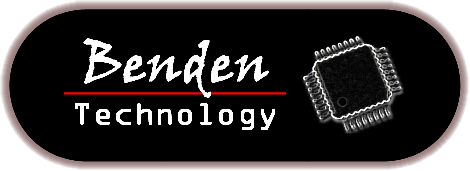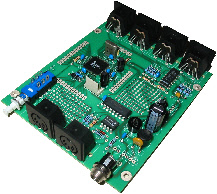© 2010 Benden Technology
Made by Serif


Clients of Benden Technology benefit from years of industry experience in a broad range of design techniques.
A common misconception is that design consultancies are inclined to “overdesign”,
using expensive or complex technology by default. At Benden Technology, our philosophy
of elegant design means that appropriate technology is chosen, according to the exact
requirements of your project. This may indeed include cutting-
Also, different projects have different priorities – for example, low cost, rapid
delivery or out-
Listed below is a selection of key technologies used in many of our projects, with a brief introduction. If any of them would enhance your next project, please contact us.

• Microcontrollers are effectively a complete, self-
• Used to add “intelligence” to products.
• Enable complex yet intuitive displays and user interfaces.
• Allow multiple versions of products simply by installing different program firmware.
• Can be updated with enhanced features at a later date.
• May incorporate rewriteable, non-
• Now very inexpensive (starting at less than £1) and hence becoming ubiquitous even in simple products.
• Preparation of firmware (program code) for microcontrollers can be as significant a part of the project as hardware design.

• DSPs are microcontrollers optimised for fast, real-
• Higher performance than general purpose microcontrollers.
• Applications include filtering, signal synthesis and signal analysis.
• Offer functionality impossible to replicate in the analogue domain.
• May also perform control functions simultaneously with data processing.

• FPGAs are large, user-
• While complex to develop, when tuned for a particular application they offer extremely
high levels of performance through a
combination of high speed and the ability
to perform many tasks simultaneously.
• Can address many of the same application areas as DSPs – choice between the two
technologies is often not clear cut and will
depend on the individual application.
• A single FPGA can replace whole boards full of small-
• High-

• Commonly encountered as the S/PDIF (consumer) and AES/EBU (professional) formats.
• Offers the ability to store, recall and extensively process audio signals with little or no degradation in quality.
• Often used in conjunction with DSP (see above).
• Another common application is streaming of audio over USB to a host computer.
• Inexpensive modules allow playback of audio stored on memory cards or USB hard
drives -
leads to a world of interactive
products.

• Despite reports to the contrary, not yet entirely usurped by digital technology.
• Analogue circuitry frequently offers the simplest solution with the lowest power, cost and noise.
• Popular for high-
• Used for pre-
• Physical layout of the components and circuit board can be as important as the circuitry itself in achieving high performance.

• Standard protocols for communication between pieces of equipment.
• Low-
• Straightforward to incorporate in other types of equipment, instantly adding PC and/or Internet connectivity.
• USB Host functionality allows use of commodity storage devices.
• Expanding choice of wireless protocols now available, including low-
• Closed systems can use simple proprietary protocols for minimum cost.

• Components soldered directly to a circuit board rather than inserted through holes.
• Far smaller than conventional Through-
• Cheaper to purchase and to manufacture with.
• Many components are now only available in surface-
• SMT is ubiquitous in medium-
• Low-
• SMT should be the default technology for all new projects unless there are clear
reasons for retaining Through-

• The standard protocol for communication between items of musical equipment (and computers).
• May be transported over USB.
• Low performance by modern technical standards, but extremely well-
• More capable alternatives such as Open Sound Control exist but have, as yet, failed to become ubiquitous.
